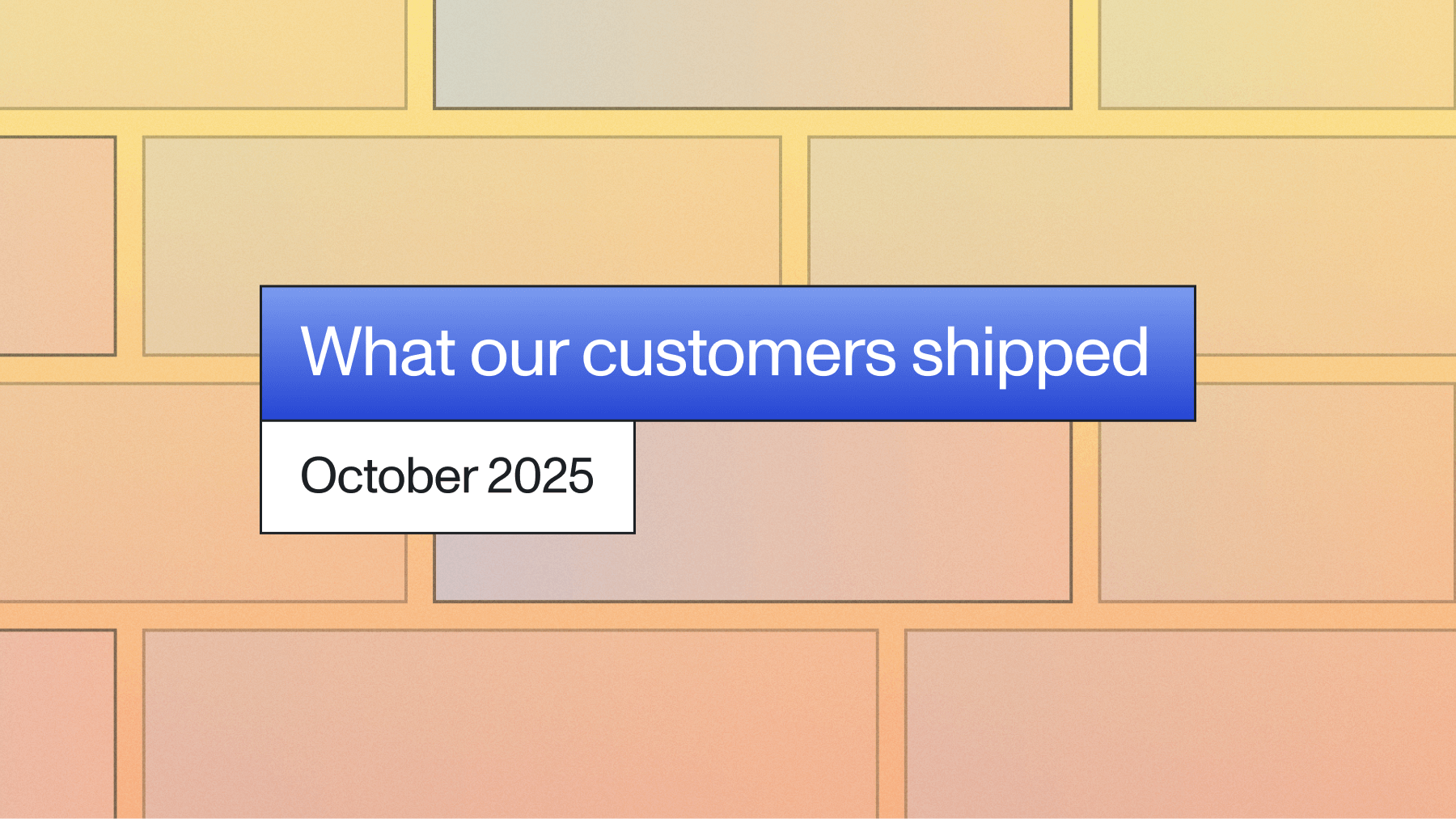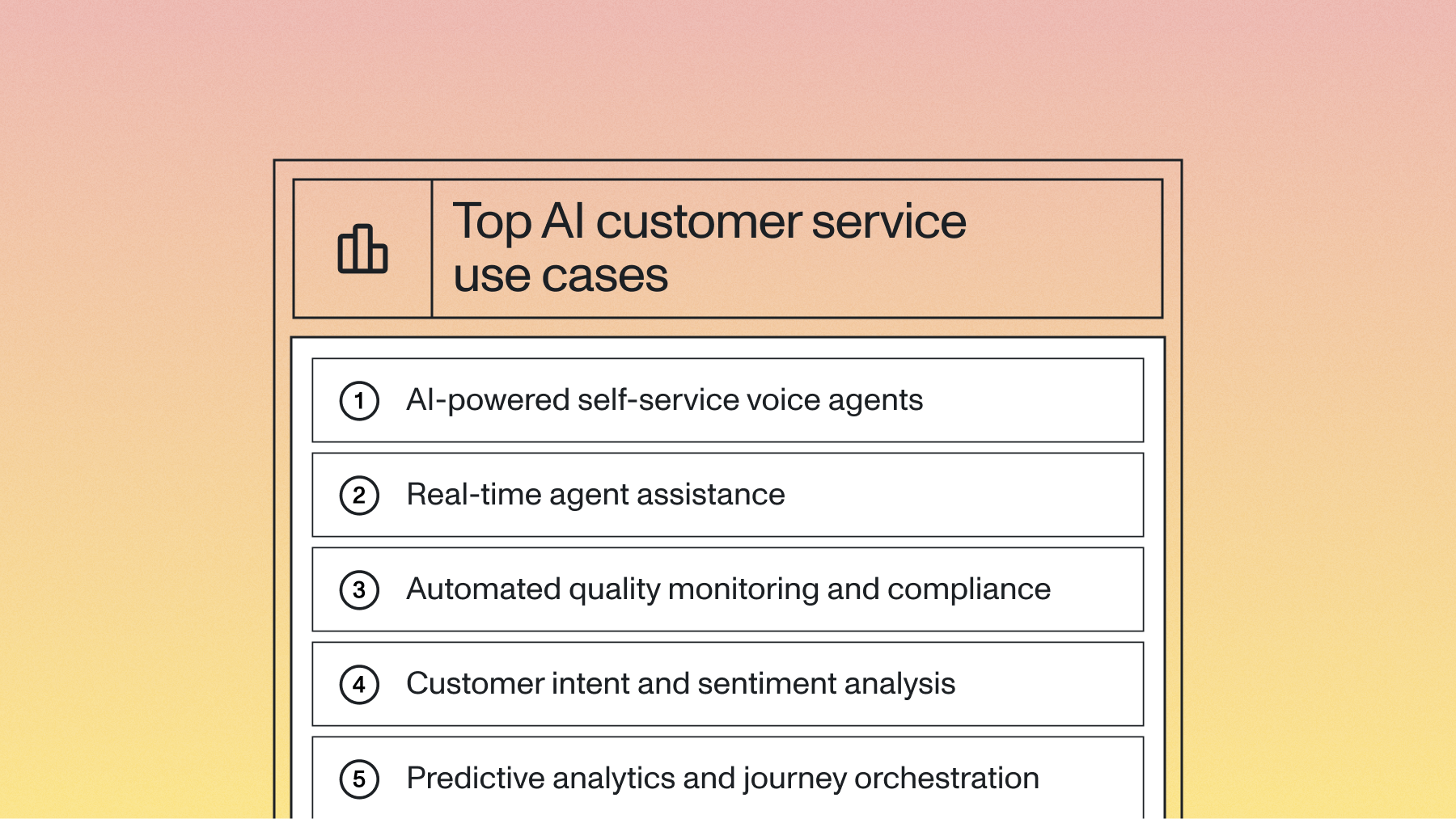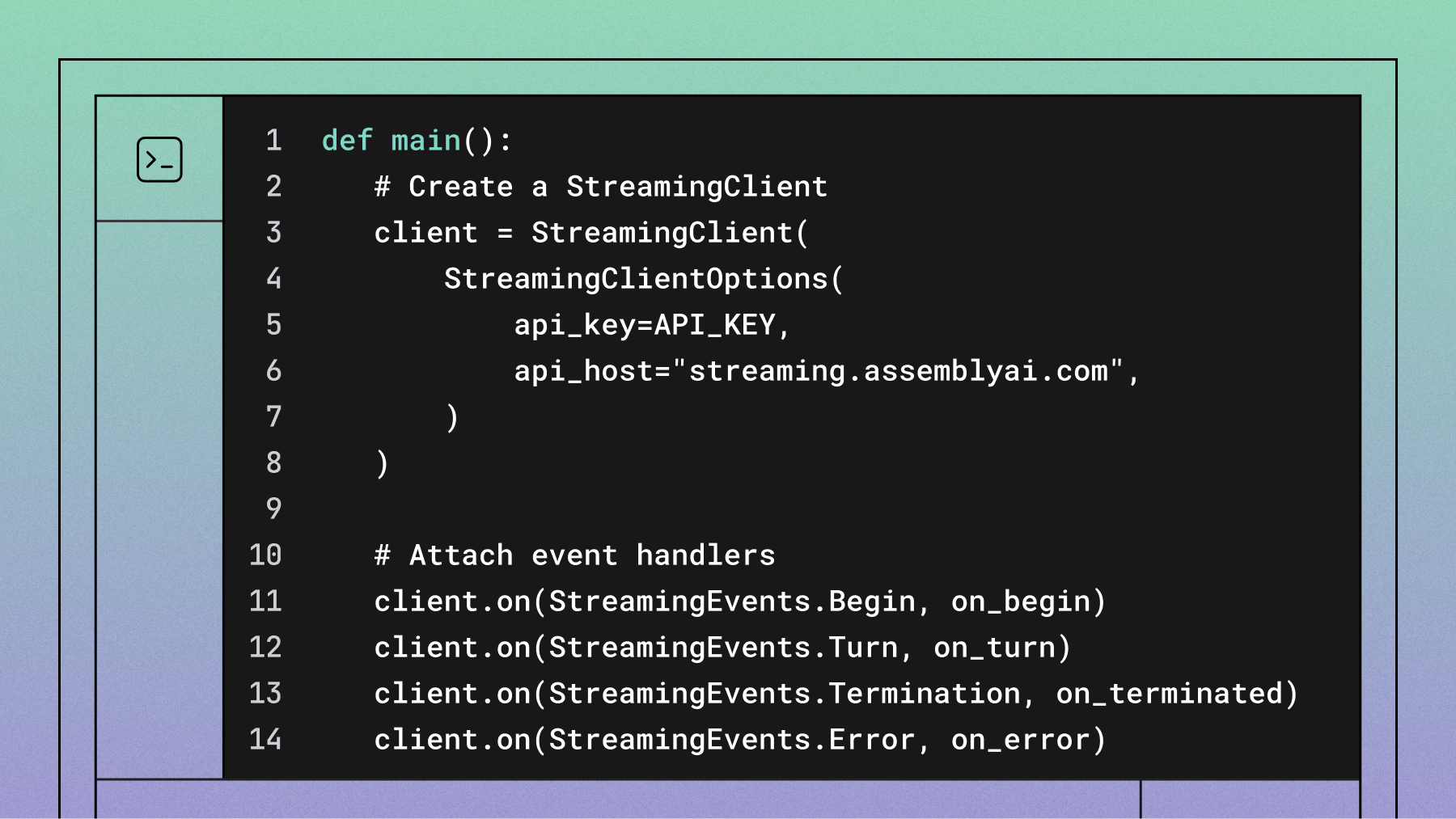What our customers shipped in October 2025
October brought a wave of exciting launches from companies building with Voice AI. From recruiting platforms adding native AI notetakers to voice agents handling half a million calls monthly, these releases show how voice technology's moving from pilot projects to production-ready features that millions of people actually use.



Ashby launches native AI Notetaker for faster hiring decisions
What they built: Native AI Notetaker that records, transcribes, and structures meeting notes for recruiting teams
Key metrics: New product launch with AI Talent Rediscovery in development
Ashby introduced their native AI Notetaker designed specifically for recruiting workflows. The feature automatically records and transcribes interviews, generates summary notes, and drafts feedback submissions for review, freeing up hiring teams to focus on evaluating candidates rather than manual note-taking.
During their product launch event, Co-Founder and CEO Benjamin Encz and GTM Specialist Chapman Swaine demonstrated how the AI Notetaker integrates directly into Ashby's recruiting platform. Unlike standalone meeting tools that require context-switching, Ashby's native approach keeps everything within the hiring workflow.
The company also previewed AI Talent Rediscovery, an upcoming feature that uses AI to surface past candidates by analyzing interview notes, criteria matching, and feedback scores. This addresses a common recruiting challenge: qualified candidates who weren't the right fit for one role might be perfect for future openings, but they're lost in growing applicant databases.
Ashby's architecture emphasizes AI readiness. As they explained in their webinar: "Ashby is uniquely positioned to help teams adopt AI responsibly while preparing for an AI and agent-oriented future." The platform's structure allows recruiting teams to leverage AI features without rebuilding their existing workflows.
For recruiting teams drowning in interview scheduling and note-taking, Ashby's AI Notetaker represents a shift from recording what happened to structuring insights that inform hiring decisions.
Bolna scales to 500K monthly calls across 20+ Indian languages
What they built: Voice AI orchestration platform for multilingual calling operations
Key metrics: 500K+ monthly calls, 40% month-over-month growth, 500+ business customers
Bolna's tackling one of India's most complex voice AI challenges: building infrastructure that works across 20+ languages, 200+ accents, fluctuating network conditions, and strict cost requirements—all while maintaining sub-500ms latency.
Founded by Prateek Sachan and Maitreya Wagh, Bolna started with a hypothesis: voice is the primary communication mode for Indian businesses, and understanding how these conversations work could unlock massive automation potential. After exploring multiple verticals, from recruitment to e-commerce to BFSI, the team identified a critical gap.
"While plenty of teams were building applications (or even building in-house)," Sachan explained in the launch announcement, "the real gap was in the layer that makes sure calls actually run well."
That's where Bolna's orchestration layer comes in. Rather than building another voice application, they built the infrastructure that ensures every call performs consistently regardless of language, accent, or network quality. Companies can build, test, and deploy voice AI agents without worrying about the underlying complexity.
The results speak for themselves: 500,000 monthly calls with 40% month-over-month growth. Bolna handles natural multi-language switching mid-conversation, maintains cost-efficiency at scale, and adapts to India's diverse linguistic landscape in ways that generic voice platforms can't.
For businesses operating in India's multilingual market, Bolna demonstrates that voice AI infrastructure needs to be purpose-built for local complexity, not adapted from solutions designed for homogeneous markets.
Casper Studios creates 70K-call voice experience for Stranger Things
What they built: Interactive voice AI experience featuring 1980s icons for Netflix's Stranger Things Season 5 promotion
Key metrics: 70,000+ calls received, second-largest voice AI consumer launch ever (after ChatGPT's Advanced Voice Mode)
Casper Studios partnered with Netflix, Doritos, and Goodby Silverstein & Partners to create 1-855-4HAWKINS—a voice AI experience tied to limited-edition "Upside Down" Doritos bags promoting Stranger Things Season 5.
Call the number and you might chat with David Hasselhoff, Paula Abdul, or Alf, each collecting "messages of hope for Hawkins." Every callback generates a unique conversation, and frequent callers encounter "strange things" woven into the experience.
The scale's remarkable. As Casper Studios founder Derek Gibbs noted: "We've already received over 70,000 calls and counting, with thousands of messages of hope from fans all over the country. That makes this the second largest voice AI consumer launch ever. Who's first place? ChatGPT's Advanced Voice Mode."
What makes this launch significant isn't just the call volume—it's the execution. Building a voice experience that handles tens of thousands of concurrent calls, maintains character consistency across celebrity personas, and creates enough variation to keep repeat callers engaged requires sophisticated orchestration.
Gibbs emphasized the team's focus on production-ready products: "We're building products that create impact at scale. Not pilots. Not demos. Real products that reach millions."
For consumer brands exploring voice AI, the Stranger Things campaign demonstrates that interactive voice experiences can drive genuine engagement when they're tied to cultural moments fans care about.
What these launches tell us
October's customer launches share a common thread: Voice AI's moving beyond demos into production environments where performance, scale, and user experience matter.
Ashby embedded AI directly into recruiting workflows. Bolna built infrastructure for India's linguistic complexity. Casper Studios created a voice experience that attracted 70,000+ calls in its first weeks.
These aren't experimental features—they're products shipping to real users, handling real conversations, and solving real problems. And they're just getting started.
Building Voice AI applications? See how companies use accurate speech recognition and speech understanding to power production applications. Explore our documentation or talk to our team about your use case.
Lorem ipsum dolor sit amet, consectetur adipiscing elit, sed do eiusmod tempor incididunt ut labore et dolore magna aliqua. Ut enim ad minim veniam, quis nostrud exercitation ullamco laboris nisi ut aliquip ex ea commodo consequat. Duis aute irure dolor in reprehenderit in voluptate velit esse cillum dolore eu fugiat nulla pariatur.




